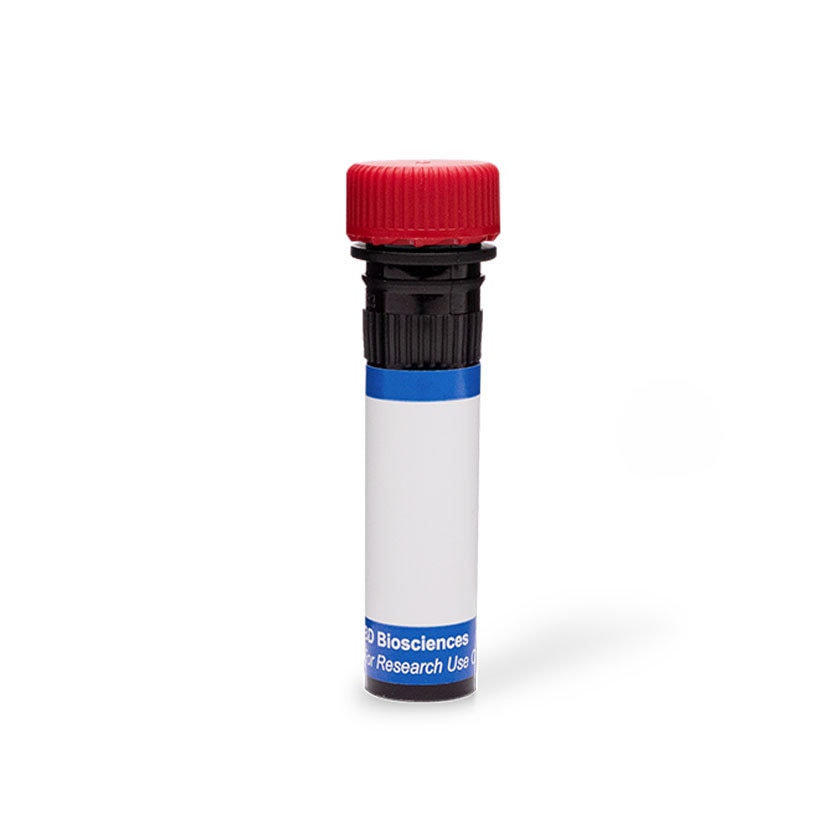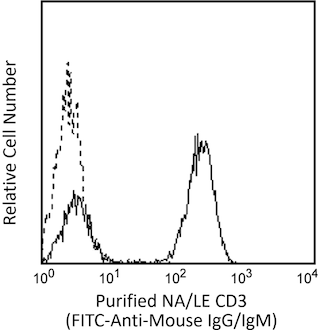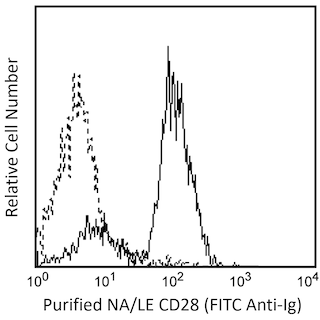-
抗体試薬
- フローサイトメトリー用試薬
-
ウェスタンブロッティング抗体試薬
- イムノアッセイ試薬
-
シングルセル試薬
- BD® AbSeq Assay
- BD Rhapsody™ Accessory Kits
- BD® OMICS-One Immune Profiler Protein Panel
- BD® Single-Cell Multiplexing Kit
- BD Rhapsody™ TCR/BCR Next Multiomic Assays
- BD Rhapsody™ Targeted mRNA Kits
- BD Rhapsody™ Whole Transcriptome Analysis (WTA) Amplification Kit
- BD® OMICS-Guard Sample Preservation Buffer
- BD Rhapsody™ ATAC-Seq Assays
- BD® OMICS-One Protein Panels
-
細胞機能評価のための試薬
-
顕微鏡・イメージング用試薬
-
細胞調製・分離試薬
-
- BD® AbSeq Assay
- BD Rhapsody™ Accessory Kits
- BD® OMICS-One Immune Profiler Protein Panel
- BD® Single-Cell Multiplexing Kit
- BD Rhapsody™ TCR/BCR Next Multiomic Assays
- BD Rhapsody™ Targeted mRNA Kits
- BD Rhapsody™ Whole Transcriptome Analysis (WTA) Amplification Kit
- BD® OMICS-Guard Sample Preservation Buffer
- BD Rhapsody™ ATAC-Seq Assays
- BD® OMICS-One Protein Panels
- Japan (Japanese)
-
Change country/language
Old Browser
Looks like you're visiting us from United States.
Would you like to stay on the current country site or be switched to your country?
BD Phosflow™ PE Mouse anti-LAT (pY171)
クローン I58-1169 (RUO)

Analysis of LAT (pY171) in human peripheral blood lymphocytes. Human peripheral blood mononuclear cells were either stimulated by cross-linking of CD3 and CD28 with NA/LE Mouse anti-Human CD3 mAb UCHT1 (Cat. No. 555329) and NA/LE Mouse anti-Human CD28 mAb CD28.2 (Cat. No. 555725) on ice for 15 minutes followed by Purified Goat anti-Mouse Ig (Cat. No. 553998) on ice for 15 minutes, and then allowed to undergo phosphorylation at 37°C for 1-2 minutes (shaded histogram) or unstimulated (open histogram). The cells were fixed (BD Cytofix™ buffer, Cat. No. 554655) for 10 minutes at 37°C, permeabilized (BD Phosflow™ Perm Buffer III, Cat. No. 558050) on ice for 30 minutes, blocked with normal mouse immunoglobulin, and then stained with PE Mouse anti-LAT (pY171, Cat. No. 558487) and APC Mouse anti-human CD3 mAb UCHT1 (Cat. No. 555335). The figure displays the upregulated phosphorylation of LAT in activated CD3-positive T lymphocytes. Flow cytometry was performed on a BD FACSCalibur™ flow cytometry system.


Analysis of LAT (pY171) in human peripheral blood lymphocytes. Human peripheral blood mononuclear cells were either stimulated by cross-linking of CD3 and CD28 with NA/LE Mouse anti-Human CD3 mAb UCHT1 (Cat. No. 555329) and NA/LE Mouse anti-Human CD28 mAb CD28.2 (Cat. No. 555725) on ice for 15 minutes followed by Purified Goat anti-Mouse Ig (Cat. No. 553998) on ice for 15 minutes, and then allowed to undergo phosphorylation at 37°C for 1-2 minutes (shaded histogram) or unstimulated (open histogram). The cells were fixed (BD Cytofix™ buffer, Cat. No. 554655) for 10 minutes at 37°C, permeabilized (BD Phosflow™ Perm Buffer III, Cat. No. 558050) on ice for 30 minutes, blocked with normal mouse immunoglobulin, and then stained with PE Mouse anti-LAT (pY171, Cat. No. 558487) and APC Mouse anti-human CD3 mAb UCHT1 (Cat. No. 555335). The figure displays the upregulated phosphorylation of LAT in activated CD3-positive T lymphocytes. Flow cytometry was performed on a BD FACSCalibur™ flow cytometry system.

Analysis of LAT (pY171) in human peripheral blood lymphocytes. Human peripheral blood mononuclear cells were either stimulated by cross-linking of CD3 and CD28 with NA/LE Mouse anti-Human CD3 mAb UCHT1 (Cat. No. 555329) and NA/LE Mouse anti-Human CD28 mAb CD28.2 (Cat. No. 555725) on ice for 15 minutes followed by Purified Goat anti-Mouse Ig (Cat. No. 553998) on ice for 15 minutes, and then allowed to undergo phosphorylation at 37°C for 1-2 minutes (shaded histogram) or unstimulated (open histogram). The cells were fixed (BD Cytofix™ buffer, Cat. No. 554655) for 10 minutes at 37°C, permeabilized (BD Phosflow™ Perm Buffer III, Cat. No. 558050) on ice for 30 minutes, blocked with normal mouse immunoglobulin, and then stained with PE Mouse anti-LAT (pY171, Cat. No. 558487) and APC Mouse anti-human CD3 mAb UCHT1 (Cat. No. 555335). The figure displays the upregulated phosphorylation of LAT in activated CD3-positive T lymphocytes. Flow cytometry was performed on a BD FACSCalibur™ flow cytometry system.


BD™ Phosflow PE Mouse anti-LAT (pY171)

Regulatory Statusの凡例
Any use of products other than the permitted use without the express written authorization of Becton, Dickinson and Company is strictly prohibited.
Preparation and Storage
Product Notices
- This reagent has been pre-diluted for use at the recommended Volume per Test. We typically use 1 × 10^6 cells in a 100-µl experimental sample (a test).
- Source of all serum proteins is from USDA inspected abattoirs located in the United States.
- Caution: Sodium azide yields highly toxic hydrazoic acid under acidic conditions. Dilute azide compounds in running water before discarding to avoid accumulation of potentially explosive deposits in plumbing.
- For fluorochrome spectra and suitable instrument settings, please refer to our Multicolor Flow Cytometry web page at www.bdbiosciences.com/colors.
- Please refer to www.bdbiosciences.com/us/s/resources for technical protocols.
関連製品






Engagement of the T cell receptor (TCR) induces signal transduction pathways that enhance gene transcription and cellular proliferation and differentiation. TCR ligation results in the recruitment and activation of multiple protein tyrosine kinases (PTKs), including lck, fyn, and ZAP70. Adaptor proteins, such as Grb2 and SLP-76, relay the signal to downstream effector molecules. LAT (linker for activation of T cells) is a substrate of the activated ZAP70 and functions to bridge the activated TCR and its associated PTKs with tyrosine kinase substrates. LAT is expressed as 36- and 38-kDa forms that result from post-translational modification, and as a 42-kDa form that results from alternative splicing. LAT is an integral membrane protein that is phosphorylated at five tyrosine sites upon TCR ligation. Following phosphorylation, LAT binds a number of important signaling molecules, including Grb2, Vav, PLCγ1, and the p85 subunit of PI3K. Multiple studies have shown that functional LAT is required for T lymphocyte activation and thymocyte development.
The I58-1169 monoclonal antibody recognizes the phosphorylated tyrosine 171 (pY171) of LAT, which is one of the phosphotyrosine sites required for binding phosphoinositide 3-kinase, Grb2, and Gads.

Development References (6)
-
Cho S, Velikovsky CA, Swaminathan CP, Houtman JCD, Samelson LE, Mariuzza RA. Structural basis for differential recognition of tyrosine-phosphorylated sites in the linker for activation of T cells (LAT) by the adaptor Gads. EMBO J. 2004; 23:1441-1451. (Biology).
-
Janssen E, Zhang W. Adaptor proteins in lymphocyte activation. Curr Opin Immunol. 2003; 15:269-276. (Biology). View Reference
-
Lin J, Weiss A. Identification of the minimal tyrosine residues required for linker for activation of T cell function. J Biol Chem. 2001; 276(31):29588-29595. (Biology).
-
Paz PE, Wang S, Clarke H, Lu X, Stokoe D, Abo A. Mapping the ZAP-70 phosphorylation sites on LAT (linker for activation of T cells) required for recruitment and activation of signalling proteins in T cells. Biochem J. 2001; 356:461-471. (Biology).
-
Samelson LE. Signal transduction mediated by the T cell antigen receptor: The role of adapter proteins. Annu Rev Immunol. 2002; 20:371-394. (Biology).
-
Zhu M, Janssen E, Zhang W. Minimal requirement of tyrosine residues of linker for activation of T cells in TCR signaling and thymocyte development. J Immunol. 2003; 170:325-333. (Biology).
Please refer to Support Documents for Quality Certificates
Global - Refer to manufacturer's instructions for use and related User Manuals and Technical data sheets before using this products as described
Comparisons, where applicable, are made against older BD Technology, manual methods or are general performance claims. Comparisons are not made against non-BD technologies, unless otherwise noted.
For Research Use Only. Not for use in diagnostic or therapeutic procedures.